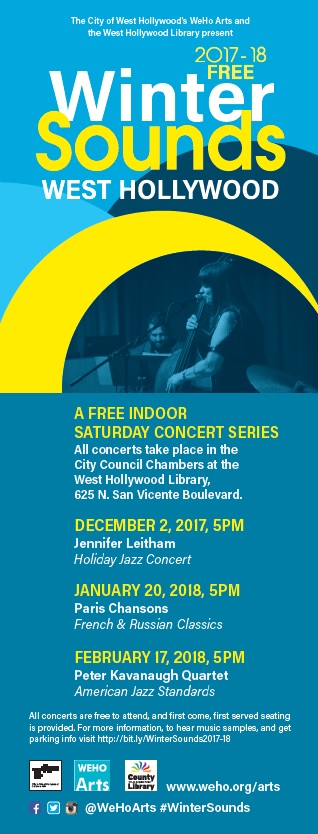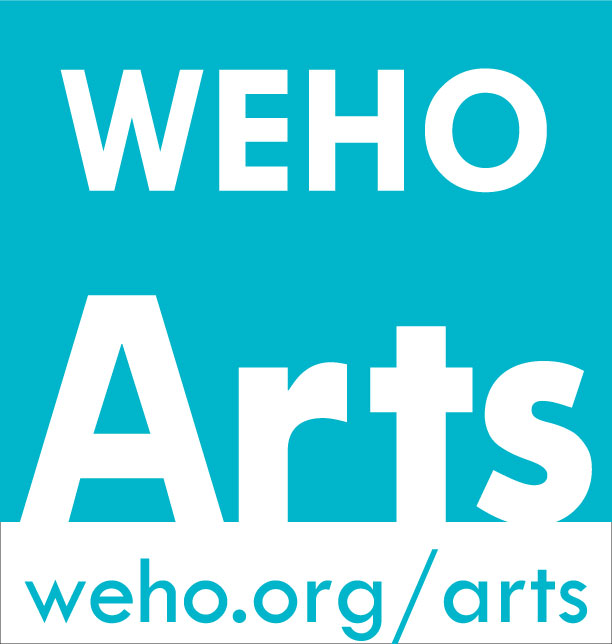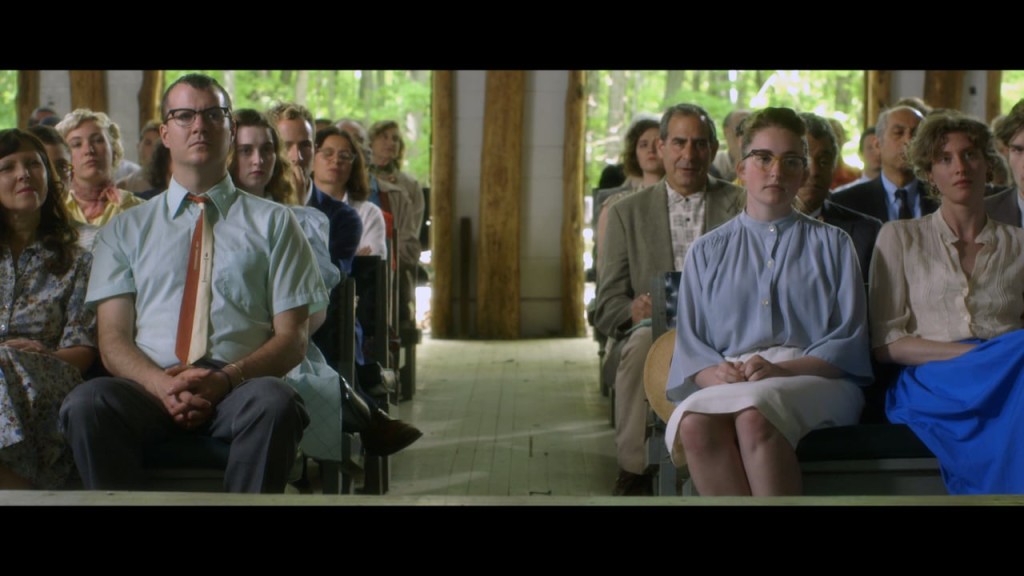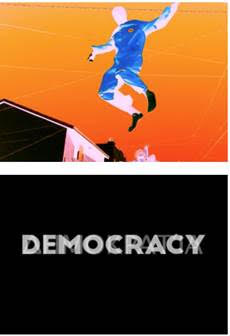
Above, a look at an evening performance by Manuel Lima, photo by Jon Viscott. Note: Sunset Strip’s resident “Jesus” adds his own element to the performance space.
Watching Brazillian-born artist Manuel Lima perform his piano score “The Sunset Cube” inside a translucent cube in a West Hollywood parking lot is a transcendental experience.
Lima calls his piano composition and performance a “composition of a life for ten days,” but the music and the experience goes beyond that. The performance artist is perched inside a translucent cube, in which he has lived for ten days, performing essentially around the clock in the Sunset Strip parking lot at 8775 Sunset Boulevard, and inviting the listener/viewer to merge his experience with their own.
In a copy of his score, Lima attests “I want to reach a point where work, life and art are all the same. I want to be present. I want to be away from my phone and social media and have my heart on one thing at a time.”
Watching his shadowy form through the cube, and at night, the red lights synchronized to his music, the listener/viewer is transported to somewhere almost unworldly. It is a landscape within a landscape, sound within sound. While traffic rushes by on Sunset Boulevard, the music throbs with intensity one minute and flows with serene intent the next. The hazy vision inside the cube itself is like a glimpse into another dimension, one in which the external landscape sifts like sand through an hourglass.
Lima notes that “art is process and life is process. This piece is just to remind you we are all going crazy. If I can have my life back again I will call it art.” At first considering being locked in his cube 24 hours a day for the ten day performance period, Lima instead realized he could more healthily encompass a morning run when he wakes up in the cube, going out for a coffee, dining on a budget, and sharing tea with his viewers. Stepping outside his contained space also enriches his composition with creative interactions.
The artist describes his time in the cube as beginning with initially driving to the cube and entering it; “I will be like a worker on a 9 to 5 job by day. During the evening I will be a Bohemian.”
Lima’s schedule follows a set routine day and night, Bohemian or not. From 7 to 9 a.m. he wakes, runs, showers, and breakfasts. From 9 to noon, he performs his “Sunset Boulevard” composition moving from left to right on the FM dial for inspiration, improvising five-minute piano segments that riff on the music and sounds he hears.
Lima says that he works essentially as “transducer” of radio waves during this time period, defining a transducer as a “device that converts one form of energy to another.” He has designed this piece to be naturally progressive, adding new piano loops and performing those done before.
He takes a lunch break from noon to one. Working with a severely limited budget for food, Lima thanks every restaurant that helps him to eat with a sign in front of the cube and a heartfelt thank you for sustenance.
He then returns to perform this composition from 1 p.m. until 5, when he offers a public tea just outside the cube space until 7 p.m. This provides a unique opportunity for the community to speak with the artist. His interactions are so genuine and warm that he becomes no longer a performer of life but a participant in life.
A dinner break lasts from 7 to 8 p.m., after which the artist performs a different composition, his “Red Light Piano.”
We enjoyed hearing and seeing this piece, which combines both light and sound in sixty different music cycles lasting between one and five minutes in length, with variations increasing in length each day. It can last around five hours, but respectful of his neighbors, Lima primarily stops around 10 p.m. so as not to disturb area residents. And then, close to midnight, Lima sleeps, or attempts to do so.
Is the experience private or public? It varies. Lima’s cube floats like a cloud above the tumult of Sunset Boulevard, removed from the world yet uniquely of it, whether Lima is living and performing inside his sparely-furnished 10-foot-square cube or interacting with viewers outside it. It is a meditation of music, performance, sound, light, and spirit, a glimpse into a private and powerful creative world, but also a public event in which watchers gather throughout the day and night to interact whether in conversation or by listening to Lima’s music.

Above, Lima by day, performing. Photo by Jon Viscott.
Lima plays his musical compositions blindfolded, creating an insular world within a world that allows him to focus entirely on the music and not on who is watching or participating in the experience. He explains the decision to blindfold himself as one to prevent nervousness and distraction, but his blindfold also creates a space between himself and his audience and the aural experience of the boulevard itself, and filters external references.
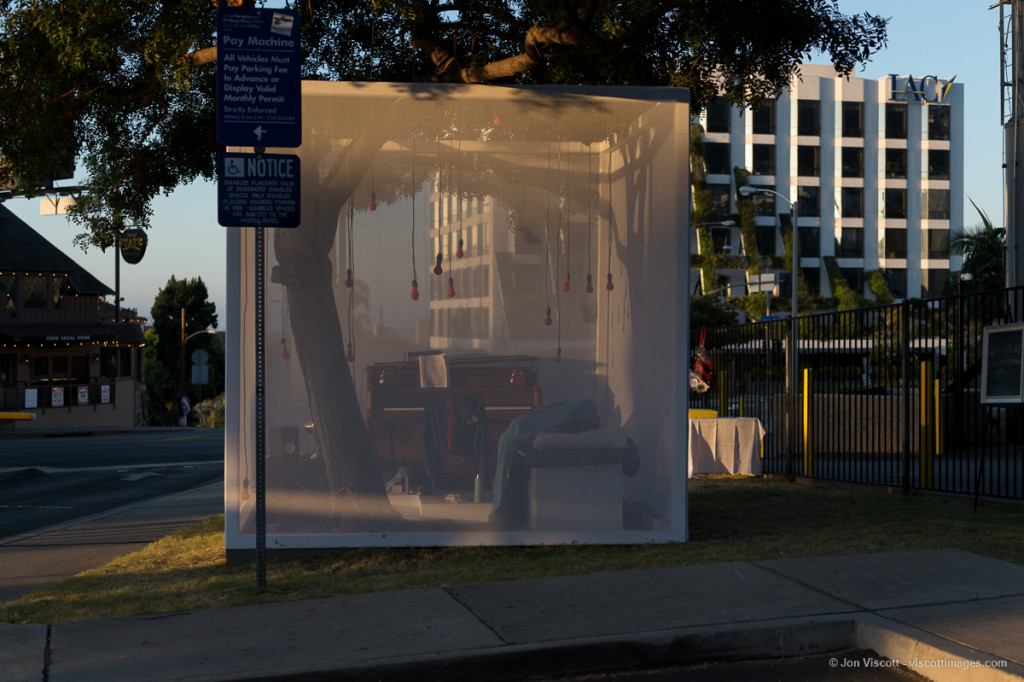
Above, a look inside Lima’s live/work space, as sunset finds Sunset Boulevard. Photo by Jon Viscott.
Lima received a full scholarship from the Brazilian government to attend grad school in the U.S., and recently earned his Doctor of Musical Arts degree from CalArts in Valencia. He performed in his cube initially in the hills outside Valencia; his transition to the current West Hollywood landscape has created a shift in his performance that encompasses the urban environment and his interactions with viewers/listeners.

Above, “Jesus” watches Lima, his cube ablaze in a light show that highlights his music. Photo by Jon Viscott.

Above, following an evening performance, Lima steps from his cube for a late night break. Photo by Jack Burke.
Lima discusses the experience of his evening performance with us. “Every night that I play I have structures that develop little by little. The composition gets more developed. My work was commissioned by the City of West Hollywood and highlights a process more than a product. It’s about finding art in life, both inside and leaving the cube,” he says. “Art and life are not separate. In the score you can get a feel for the experience. It’s meditation, the Red Light Piano.”

Above, Lima’s red lights begin to glow. Photo by Genie Davis.
Asked what it is like being so exposed yet so contained in his cube, Lima says “It’s noisy. People are always walking past you, even as you are getting ready for bed.”

Above, Lima with author Genie Davis. Photo by Jack Burke.
“It’s been a privilege to be here. It’s amazing, like being in a very surreal artistic residency,” Lima relates. “Between public and private interactions I get a lot of time to create, but I am in the middle of regular life, which informs the art.”
Lima’s incredibly unique and stirring performance ends tomorrow, August 21st at 10 p.m. Stop by for a listen, a look, or a conversation. Lima is performing his closing on the same night the Olympic closing ceremonies take place in Brazil.
Lima’s cube is perched in the city parking lot at 8775 Sunset Boulevard; parking is plentiful and hourly.
- Genie Davis; Photos and video by Jon Viscott, Genie Davis, Jack Burke




